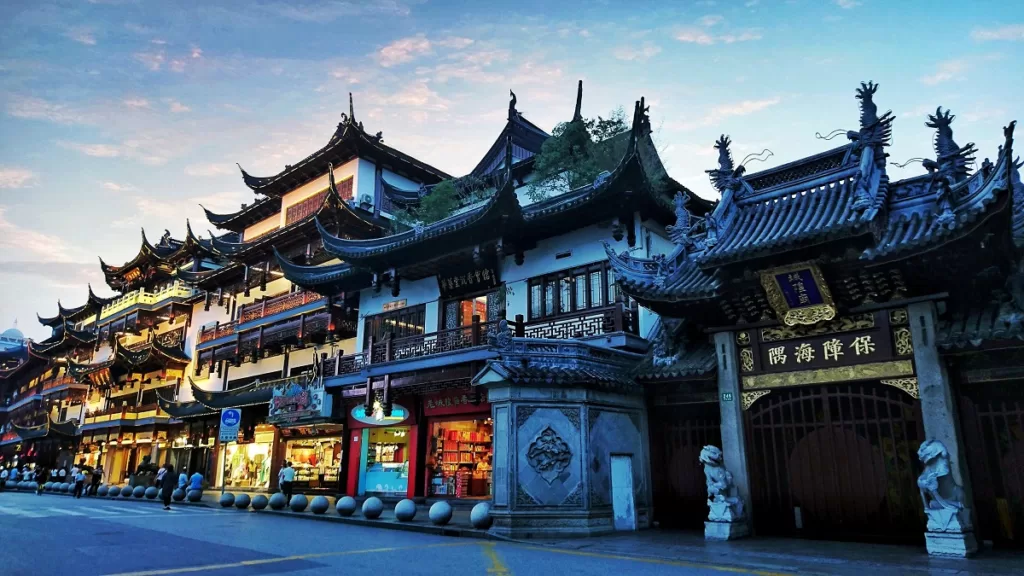上海龙华寺 - 门票、开放时间、亮点和小贴士
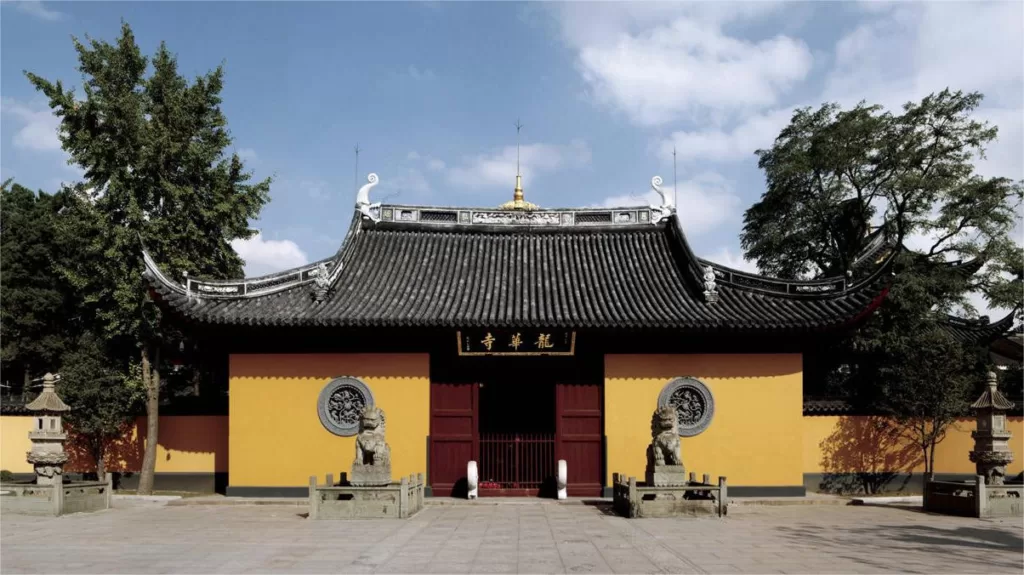

Longhua Temple (龙华寺), situated in the southern outskirts of 上海, holds the distinction of being the oldest and largest temple in the Shanghai region. Legend suggests that the temple was built by Sun Quan, a warlord during the Three Kingdoms period, for his mother over 1700 years ago. However, documented history traces the establishment of Longhua Temple to the second year of the Taiping Xingguo era in the Northern Song Dynasty (977 AD). Its name originates from the Buddhist tale of Maitreya Bodhisattva achieving enlightenment under a Longhua tree.
Within Longhua Temple, visitors have the opportunity to partake in paid vegetarian meals, renowned for their delectable taste. It’s a common sight to witness worshippers queueing for a bowl of vegetarian noodles after offering incense at the temple. During the New Year festivities, Longhua Temple hosts a bell-ringing ceremony, attracting locals keen on striking the bell for good luck while offering incense to pray for a peaceful year.
Legend holds that the third day of the third lunar month marks the day when Maitreya incarnated as the Monk Budai. To commemorate this, Longhua Temple organizes a memorial ceremony during spring when peach blossoms bloom, drawing crowds of worshippers and local vendors, forming a vibrant temple fair. The annual Longhua Temple Fair is a lively celebration featuring dragon and lion dances, traditional craft displays, and the sale of local delicacies, offering a rich cultural experience for both residents and visitors.
目录
- 基本信息
- 地点和交通
- History of Longhua Temple
- Highlights of Longhua Temple
- Vlog about Longhua Temple
- 从评论中总结出的有用提示
- 相关事实
- 上海其他寺庙
基本信息
| 预计游览时间 | 约 2 小时 |
| 票价 | 10 元 |
| 开放时间 | 7.10 – 16.30 throughout the year, except for the 1st and 15th January of the lunar year, when it opens from 5.00 – 16.30. |
地点和交通
The Longhua Temple is located in the southwestern part of Shanghai, near the Shanghai Film Museum. The address is No. 2853, Longhua Road, Xuhui District, Shanghai, China. The temple is surrounded by several tourist attractions, such as the Longhua Martyrs Cemetery and the Longhua Park. There are also several restaurants and shops nearby, offering visitors a chance to experience local cuisine and buy souvenirs. To get there, you have the following options:
巴士 Take bus 41, 44, 166, 167, 714, 733, 734, 864, or 933, get off at Longhua Lu Huaronglu (龙华路华荣路), walk about 50 meters to the south to reach the ticket office of the temple.
地铁 Take subway line 11 or 12, get off at Longhua Station (龙华站), exit the station from Exit 3, and the temple will be right across the road.
History of Longhua Temple
The history of Longhua Temple has ancient roots, with conflicting accounts of its founding. Some sources suggest it was established in the fifth year of the Red Phoenix era in the Eastern Wu period of the Three Kingdoms (242 AD), while others claim it was built in the third year of the Chui Gong era in the Tang Dynasty (687 AD). The precise founding date remains elusive.
During the Tang Dynasty, the temple suffered destruction due to warfare. In the second year of the Taiping Xingguo era of the Northern Song Dynasty (977 AD), it was reconstructed by Qian Hongchu, the King of Wuyue, who renamed it “Kongxiang Temple.” However, during the transitional period between the Song and Yuan Dynasties, the temple faced destruction once again, only to be rebuilt during the Yongle era of the Ming Dynasty. At this point, it adopted the name “Longhua Temple.” Throughout the subsequent centuries, the temple underwent multiple cycles of destruction and reconstruction, with the present structure dating back to the reconstruction efforts during the Guangxu era of the Qing Dynasty, following the architectural design of the Song Dynasty’s seven-hall complex.
Longhua Temple underwent comprehensive renovations in 1957 and 1979. The temple houses a collection of precious artifacts, including scriptures, golden seals, and Buddha statues dating from the Tang, Five Dynasties, Ming, and Qing periods.
Highlights of Longhua Temple
Longhua Pagoda
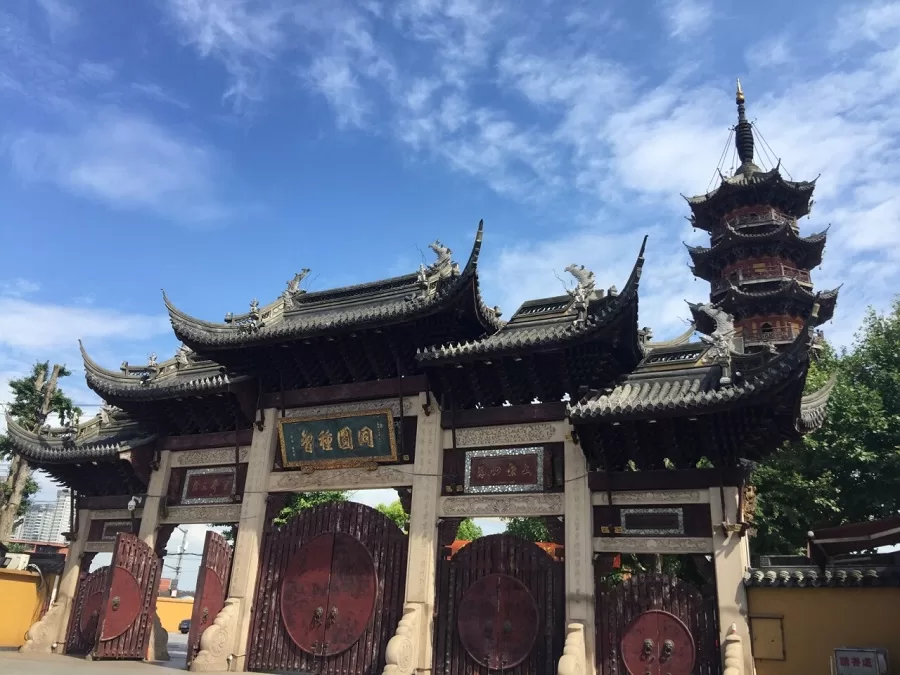
Built in the second year of the Taiping Xingguo era (977 AD) during the Song Dynasty, Longhua Pagoda is a seven-story, octagonal wooden pagoda standing at approximately 40 meters tall. The interior of the pagoda features a brick core with square-shaped chambers, while the exterior is adorned with wooden corridors, showcasing the architectural style of the Song Dynasty. The unique design of the pagoda, with its eight-sided structure and a central four-sided chamber, involves a rotation of forty-five degrees per level, creating a balanced distribution of weight and wall surface positions. Unfortunately, due to the soft soil in Shanghai, Longhua Pagoda has tilted over the years. For preservation purposes, access to the pagoda’s interior is restricted, allowing visitors to appreciate its exterior but not ascend the structure.
马哈维拉厅
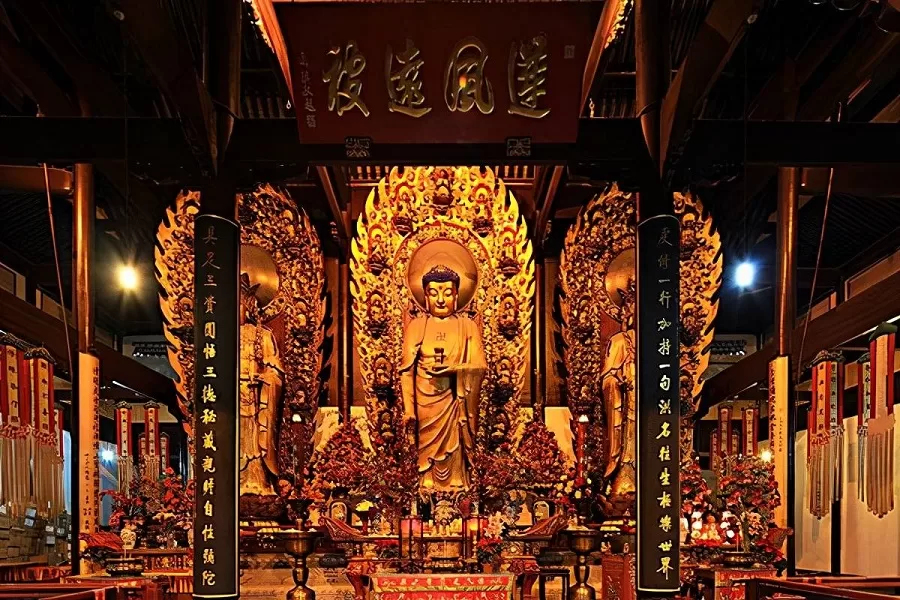
The Mahavira Hall in Longhua Temple features a central statue of Vairocana Buddha, adorned with a Pi Lu hat and making the Pi Lu seal. Flanking the Buddha are Manjushri Bodhisattva on the left and Samantabhadra Bodhisattva on the right. On either side are twenty heavenly deities and eighteen Arhats. Behind them, fifty-three child monks pay homage to Avalokitesvara, depicting a scene from 2,500 years ago when Buddha preached at the Lingjiu Palace. The tableau showcases Buddha preaching, assisted by Manjushri and Samantabhadra, protected by twenty heavenly deities, propagated by eighteen Arhats, guided by Avalokitesvara, and sought after by child monks.
The twenty heavenly deities were originally gods of the Brahman religion who later converted to Buddhism. They include major deities like Brahma, Yama, and others who played roles such as shielding Buddha from wind and rain during meditation. Additionally, there is the dragon king who protected Buddha by creating rain to extinguish a fire at a monastery and Vaisravana, who retrieved Buddha’s relics after his parinirvana.
建筑风格
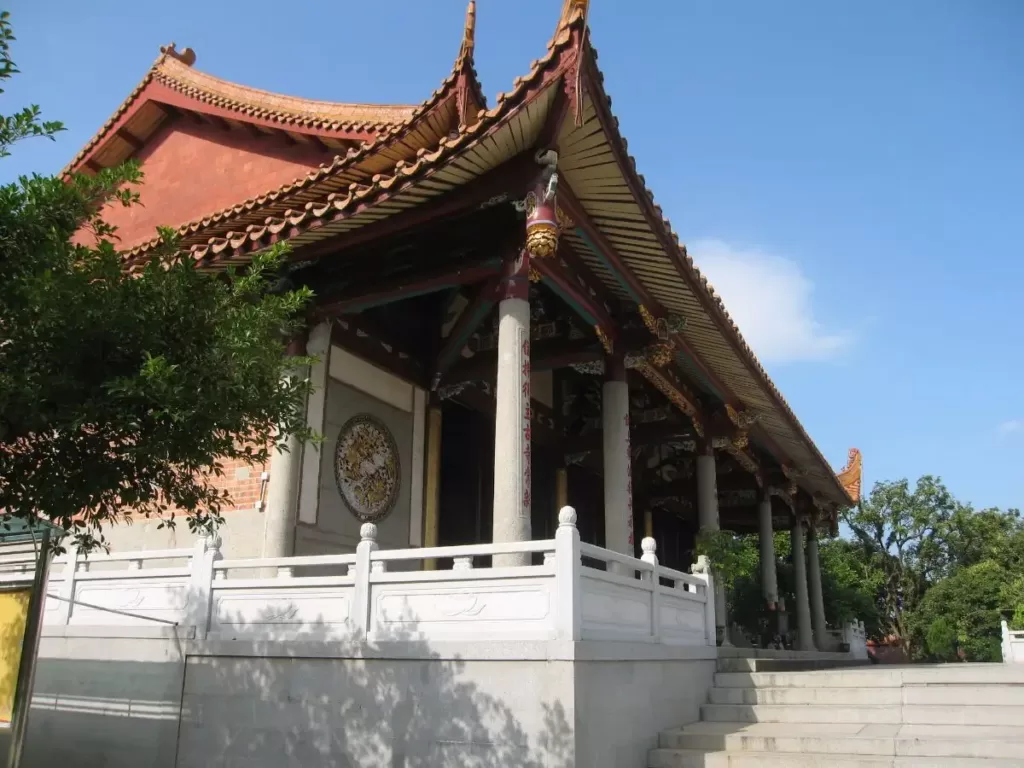
Longhua Temple follows the architectural style of the Song Dynasty’s “Jia Lan Seven-Hall System.” The temple’s central axis, from south to north, consists of six consecutively arranged halls: Maitreya Hall, Heavenly King Hall, Mahavira Hall, Three Saints Hall, the abbot’s room enclosed in a courtyard, and the Scripture Hall. The first hall along the central axis is the Maitreya Hall, housing an image of the compassionate Maitreya. The second hall is the Heavenly King Hall, featuring four 4-meter-tall Heavenly Kings on each side and a central Maitreya image with a heavenly crown. The third hall is the Mahavira Hall, with a central image of Vairocana Buddha. The fourth hall is the Three Saints Hall, the fifth is the abbot’s room within a closed courtyard, and the sixth is the Scripture Hall. This architectural arrangement reflects the hierarchical and axial design principles characteristic of traditional Chinese Buddhist temples.
Spring Festival
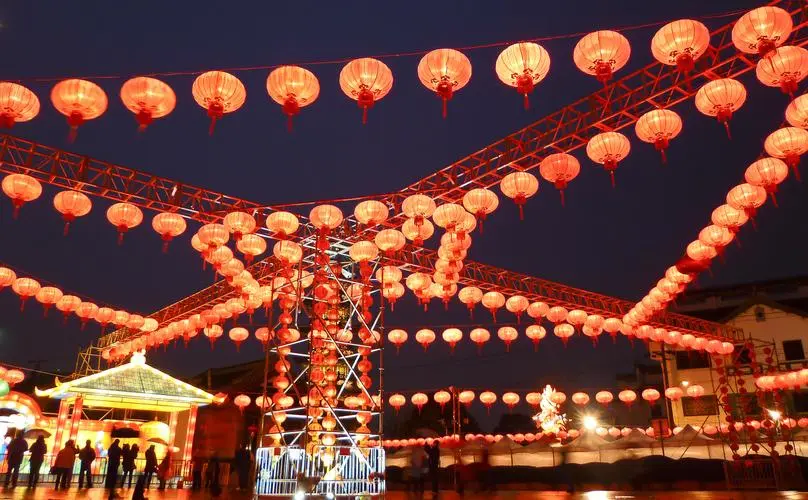
The Spring Festival, also known as Chinese New Year, is a major event at the Longhua Temple in Shanghai. The temple hosts a traditional lantern fair during the festival, which attracts thousands of visitors from all over the world. The fair features colorful lanterns of all shapes and sizes, food stalls selling traditional Chinese snacks, and various cultural performances, such as lion dances and acrobatics. Many people also come to the temple during the Spring Festival to pray for good fortune and blessings for the upcoming year.
Buddhism Experience

Visiting the Longhua Temple in Shanghai is an excellent opportunity to experience Buddhism firsthand. The temple offers various activities that allow visitors to participate in Buddhist practices, such as meditation and chanting. It also provides educational programs where visitors can learn about the history, philosophy, and teachings of Buddhism. Visitors can also observe monks performing daily rituals, such as offering incense and making offerings. Additionally, the temple has a library where visitors can read Buddhist scriptures and other literature related to the religion.
Vlog about Longhua Temple
从评论中总结出的有用提示
Enjoy Vegetarian Meals: It’s recommended to try the vegetarian noodles near the exit., priced at around 15 yuan per bowl. Additionally, there are side dishes available for 10 yuan each. After finishing your meal, clean up after yourself by returning the utensils to the designated area near the entrance. The temple also offers special traditional snacks that you can bring back for your family and friends. If you don’t find what you’re looking for here, there’s another purchasing point near the main gate.
Beware of Fortune Tellers: Be cautious of individuals, usually older women, outside the entrance who may try to offer fortune-telling services. It’s advisable to politely decline and avoid engaging with them.
Entrance Options: There are two ways to enter Longhua Temple:
- Enter through the main gate and scan a QR code on your phone to purchase a 10 yuan entrance ticket. This ticket also includes a free bundle of incense.
- Alternatively, if you’re entering from the parking lot, you can access the temple directly to enjoy vegetarian noodles without needing to purchase a separate ticket.
Mind the Cats: Longhua Temple is known to be home to several cats. While they can be cute to observe, be cautious as some cats may be aggressive. It’s best to keep your distance and avoid disturbing them.
相关事实

Dress coade in Longhua Temple
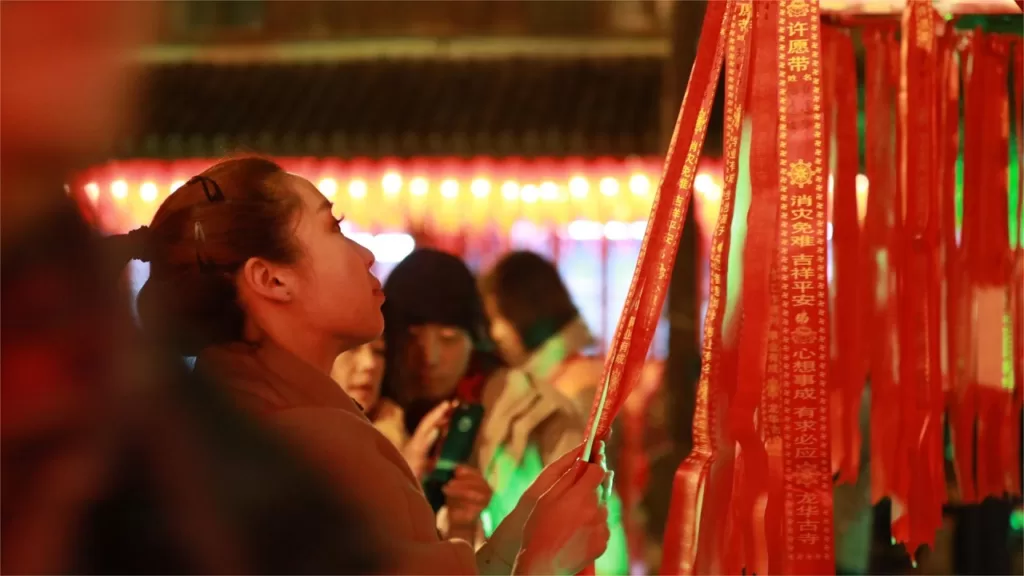
New Year activities in Longhua Temple
上海其他寺庙

玉佛寺 - 独特的玉佛像

静安寺--一座建于 2000 多年前的寺庙

真如寺 - 唐代寺庙

上海孔庙--令人肃然起敬的文化古迹
